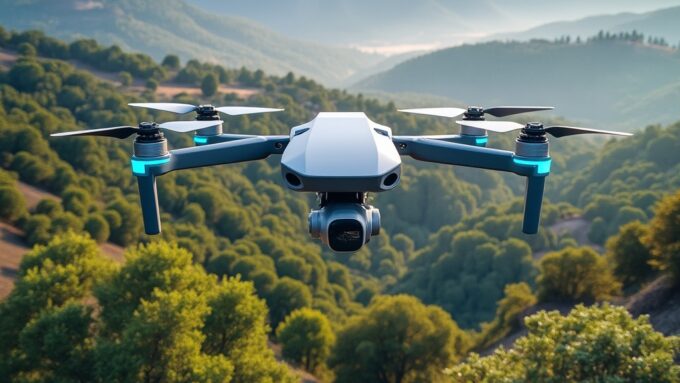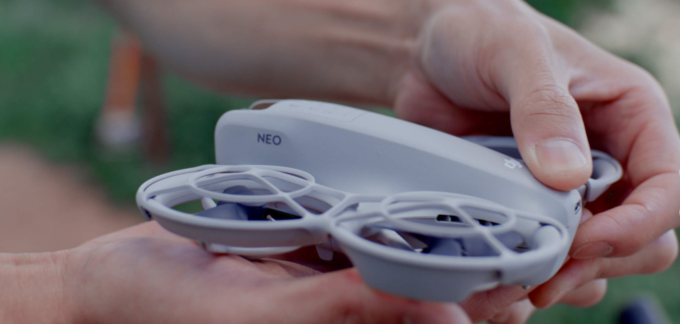For professionals and enthusiasts who demand the best in aerial photography and videography, the Mavic 3 Pro stands as a worthy investment. The DJI Mavic 3 Pro is an impressive evolution in DJI’s flagship consumer drone series, and it introduces a Tri-Camera System, which sets it apart from previous Mavic iterations and most competitors on the market. This review will break down the major features, performance aspects, and potential drawbacks of this advanced drone.
Table of Contents
Design and Build Quality

At first glance, the Mavic 3 Pro looks sleek and professional, staying true to the foldable design that DJI has refined over the years. It’s a compact and portable drone, easily stowed in a backpack, making it perfect for professionals and enthusiasts who need a mobile solution for aerial photography and videography. The build quality is sturdy, using premium materials that give it a solid, durable feel.
Tri-Camera System

The headline feature of the Mavic 3 Pro is undoubtedly the Tri-Camera System, which consists of:
- 4/3 CMOS Hasselblad Camera: This is the main camera and continues DJI’s partnership with Hasselblad. It’s equipped with a large sensor, which captures more light and detail, producing professional-grade 20MP still images and 5.1K video at 50fps or DCI 4K at up to 120fps. Colors are natural and vibrant, thanks to the Hasselblad Natural Color Solution (HNCS), delivering stunning dynamic range and sharpness.
- 70mm Telephoto Camera (Medium Tele): This is the middle ground between wide-angle and extreme telephoto, perfect for mid-range shots. It offers 48MP photos and 4K video, giving users more flexibility when composing shots from distances without distortion.
- 166mm Telephoto Camera (Super Tele): The most unique feature in the system is this ultra-telephoto lens. With a 7x optical zoom, it’s ideal for capturing details of distant subjects without needing to fly too close, which is great for wildlife, sporting events, or landscape photography. It offers 12MP resolution and 4K video capabilities, and while not as high-res as the main camera, it serves a specific purpose in long-range photography and videography.
This multi-camera setup gives aerial photographers and filmmakers unparalleled versatility in framing their shots, from wide landscapes to distant subjects, without physically moving the drone closer or changing lenses.
Image and Video Quality
The Hasselblad camera on the Mavic 3 Pro is a standout, especially for its excellent dynamic range, vibrant color accuracy, and sharpness, even in low-light conditions. The larger sensor allows for more light capture, meaning low-light photography produces less noise compared to smaller sensor drones.
The 5.1K video resolution is a massive plus for videographers, offering flexibility in post-production, especially when downscaling to 4K or HD. The ability to shoot DCI 4K at 120fps adds slow-motion capabilities, which is a fantastic tool for creative shots. DJI’s 10-bit D-Log M color profile offers better post-processing latitude, crucial for professional color grading.
On the other hand, the telephoto cameras (especially the 166mm) have some limitations. The image quality, while decent, doesn’t quite match the clarity and detail of the main camera, especially in lower light situations. It’s more of a specialty tool for very specific shots rather than an all-around performer.
Flight Performance
The Mavic 3 Pro boasts excellent flight performance. It features an impressive maximum flight time of up to 43 minutes under optimal conditions, though in real-world scenarios, it usually averages around 35-38 minutes depending on wind conditions and camera usage.
Its OcuSync 3.0+ transmission system ensures a stable connection, offering a control range of up to 15 kilometers (9.3 miles), which is more than enough for most use cases. The live feed is transmitted in 1080p, providing crisp, real-time visuals.
DJI has also equipped the Mavic 3 Pro with omnidirectional obstacle sensing, meaning it can detect obstacles in all directions, making it one of the safest drones to fly. Paired with APAS 5.0 (Advanced Pilot Assistance System), the drone can autonomously navigate around obstacles, adding to its reliability in challenging environments.
Intelligent Features
DJI’s suite of intelligent flight modes is present here, with options such as:
- ActiveTrack 5.0: Advanced subject tracking with better accuracy and smoother following, even in complex environments.
- Point of Interest 3.0: Allows the drone to orbit around a specific subject with ease.
- MasterShots and QuickShots: Automated cinematic shot sequences for easy video creation.
- Waypoints 3.0: Plan routes and automate complex shots, useful for mapping or repeated shooting paths.
These modes greatly enhance creativity and ease-of-use, especially for solo operators.
Battery Life and Charging
The Mavic 3 Pro’s 43-minute maximum flight time is class-leading, giving users ample time to capture extensive footage without needing frequent battery swaps. The DJI 65W charging hub charges the batteries relatively quickly, allowing users to get back in the air faster.
Controller and DJI Fly App
The drone is compatible with DJI’s RC Pro controller, which features a bright built-in screen, eliminating the need for a smartphone. The controller is intuitive, responsive, and offers customizable buttons for quick access to key features. The DJI Fly app, which pairs with the drone, is user-friendly and offers full control over camera settings, flight modes, and real-time data.

Drawbacks
While the Mavic 3 Pro is a nearly flawless drone, there are a few minor drawbacks:
- Price: It’s one of the more expensive consumer drones on the market, which may be a deterrent for hobbyists. The extra features justify the price for professionals, but it’s still a significant investment.
- Telephoto Camera Limitations: While the ultra-telephoto camera is a welcome addition, the image quality isn’t as high as the primary Hasselblad camera, especially in lower light. It’s great for niche use cases, but not for general photography.
- Complexity for Beginners: With so many advanced features, this drone might be overwhelming for first-time pilots or users who are unfamiliar with professional-grade equipment.
The DJI Mavic 3 Pro is a game-changer, particularly with its Tri-Camera System. It offers versatility and power for professional videographers, photographers, and content creators. Its premium design, outstanding image quality, long battery life, and intelligent flight modes make it one of the best drones available in 2024. While it comes at a high price and has some limitations in the telephoto camera, the overall package makes it a must-have for anyone serious about aerial imaging.













